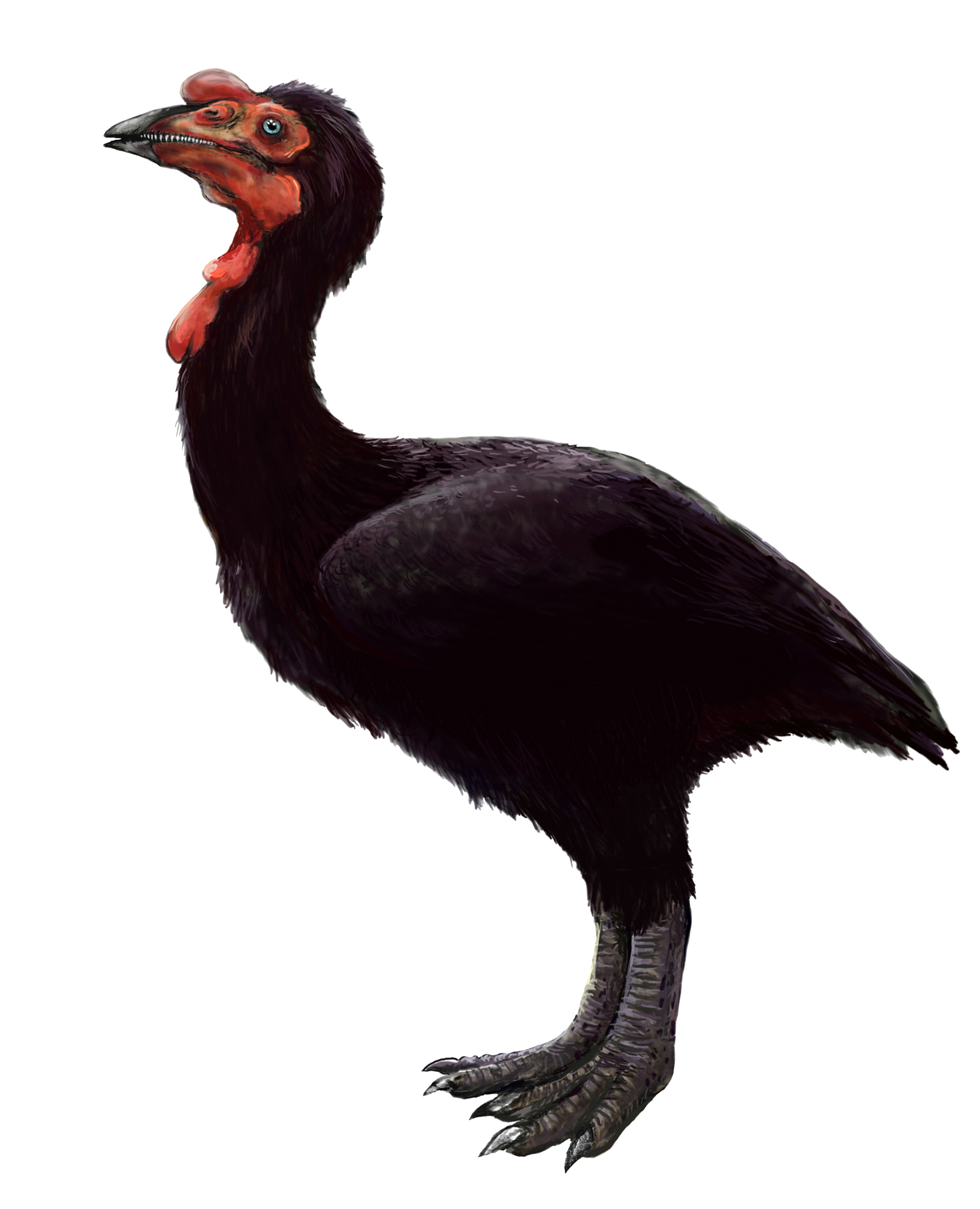Patagopteryx on:
[Wikipedia]
[Google]
[Amazon]
''Patagopteryx'' is an extinct  Located in strata of the
Located in strata of the
monotypic
In biology, a monotypic taxon is a taxonomic group (taxon) that contains only one immediately subordinate taxon. A monotypic species is one that does not include subspecies or smaller, infraspecific taxa. In the case of genera, the term "unispe ...
genus
Genus ( plural genera ) is a taxonomic rank used in the biological classification of living and fossil organisms as well as viruses. In the hierarchy of biological classification, genus comes above species and below family. In binomial nom ...
of patagopterygiforms that lived during the Late Cretaceous
The Late Cretaceous (100.5–66 Ma) is the younger of two epochs into which the Cretaceous Period is divided in the geologic time scale. Rock strata from this epoch form the Upper Cretaceous Series. The Cretaceous is named after ''creta'', ...
, around 80 mya, in what is now the Sierra Barrosa in northwestern Patagonia
Patagonia () refers to a geographical region that encompasses the southern end of South America, governed by Argentina and Chile. The region comprises the southern section of the Andes Mountains with lakes, fjords, temperate rainforests, and g ...
, Argentina
Argentina (), officially the Argentine Republic ( es, link=no, República Argentina), is a country in the southern half of South America. Argentina covers an area of , making it the second-largest country in South America after Brazil, th ...
. About the size of a chicken, it is the earliest known unequivocal example of secondary flightlessness: its skeleton shows clear indications that the ancestors of ''Patagopteryx'' were flying birds.
 Located in strata of the
Located in strata of the Santonian
The Santonian is an age in the geologic timescale or a chronostratigraphic stage. It is a subdivision of the Late Cretaceous Epoch or Upper Cretaceous Series. It spans the time between 86.3 ± 0.7 mya (million years ago) and 83.6 ± 0.7 mya. ...
Bajo de la Carpa Formation
The Bajo de la Carpa Formation is a geologic formation of the Neuquén Basin that crops out in northern Patagonia, in the provinces of Río Negro and Neuquén, Argentina. It is the oldest of two formations belonging to the Río Colorado Subgr ...
, the original remains were discovered by Oscar de Ferrariis, Director of the Natural History Museum of the Comahue National University in Neuquén
Neuquén (; arn, Nehuenken) is the capital city of the Argentine province of Neuquén and of the Confluencia Department, located in the east of the province. It occupies a strip of land west of the confluence of the Limay and Neuquén river ...
around 1984–5. He passed them onto noted paleontologist José Bonaparte
José Fernando Bonaparte (14 June 1928 – 18 February 2020) was an Argentine paleontologist who discovered a plethora of South American dinosaurs and mentored a new generation of Argentine paleontologists
. One of the best-known Argentine paleo ...
, who described the species
In biology, a species is the basic unit of classification and a taxonomic rank of an organism, as well as a unit of biodiversity. A species is often defined as the largest group of organisms in which any two individuals of the appropriate s ...
''Patagopteryx deferrariisi'' in 1992.
Characteristics
The ''Patagopteryx'' had feet with fused bones, much like modern birds. The bird did not have a wishbone, meaning that it would have been impossible for it to have had the muscles necessary for flying. The legs had very short femurs, characteristic of a running animal. The second toe has a curvedclaw
A claw is a curved, pointed appendage found at the end of a toe or finger in most amniotes (mammals, reptiles, birds). Some invertebrates such as beetles and spiders have somewhat similar fine, hooked structures at the end of the leg or tarsus ...
, but it does not appear to have been used as a weapon. It was omnivorous
An omnivore () is an animal that has the ability to eat and survive on both plant and animal matter. Obtaining energy and nutrients from plant and animal matter, omnivores digest carbohydrates, protein, fat, and fiber, and metabolize the nut ...
, and probably traveled in flocks across the plains of South America.
See also
*Origin of birds
The scientific question of within which larger group of animals birds evolved has traditionally been called the "origin of birds". The present scientific consensus is that birds are a group of maniraptoran theropod dinosaurs that originated ...
References
{{Taxonbar, from=Q2056622 Bird genera Cretaceous birds of South America Cretaceous Argentina Fossils of Argentina Bajo de la Carpa Formation Fossil taxa described in 1992 Taxa named by José Bonaparte Prehistoric euornitheans